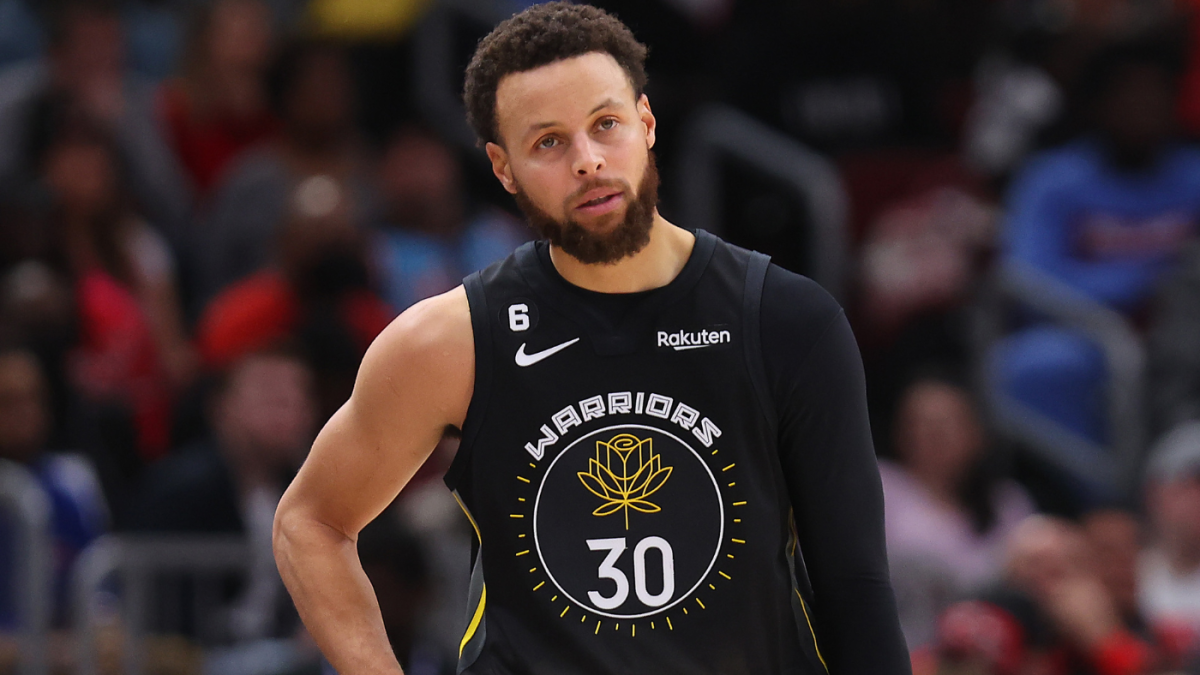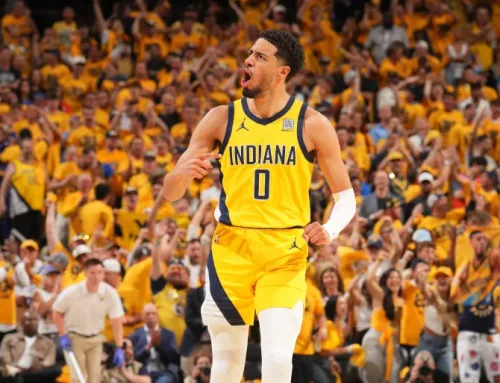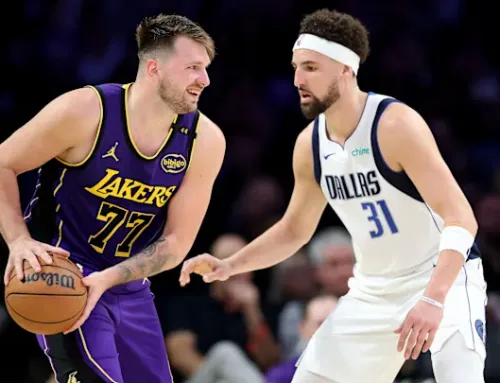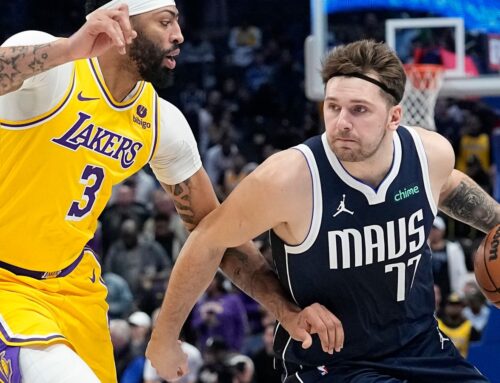By Avi Tyagi
The dynastic Warriors, a team that ran roughshod through the West last season, has been perhaps the most enigmatic team of the season thus far. A variety of different factors have sapped their potential to run for a title repeat. The diaspora of talent such as Gary Payton II, Otto Porter Jr., Damion Lee, Nemanja Bjelica, and assistant head coach Mike Brown, injuries to Andrew Wiggins and to the effervescent Steph Curry for drawn-out stretches, chemistry issues from a poor choice by Draymond Green, and perhaps even an air of organizational flux with the impending nature of declining contracts, such as those of Klay Thompson, Draymond, and Bob Myers to name a few. Upon further examination, while these factors may all be collectively chipping away at the team’s potential, in truth, the dip down to a .500 record past the halfway marker of the season may be more than a sum of its parts.
While the departures of several key bench pieces sapped the roster, that aforementioned foursome accounted for 598 minutes during the conquest of the Grizzlies, Mavericks, and Celtics. Out of a possible 4,080, that represents less than 15% of available minutes during the most crucial stretch of their season. With promising youngsters on the roster and Donte DiVincenzo added via the Taxpayer MLE, it would not have been unreasonable to expect the losses to be somewhat dampened in the regular season and perhaps minimalized in a playoff atmosphere. Mike Brown’s traveling party on his egress for nearby Sac-town consisted of only one Warriors’ assistant, Leandro Barbosa (champion as both player and coach with the organization). With Atkinson in tow, and the fast-rising Jama Mahlalela on deck, the expected turnover for a championship coaching staff was reasonably accounted for. That combination of personnel changes would reasonably sap the team defense, but with team principles identified and continuity with much of the surrounding coaching staff and players, the knowledge and execution were not expected to be compromised to such a degree. Normally, injuries to Wiggins and Steph could easily be identified as reasons for a terrible record. After all, the Warriors finished 23-21 in games without Steph or Draymond last season (not including games where they departed early due to injuries). Perhaps a truly worse roster this season would sink to even lower levels without Steph and Wiggins during concurrent stretches this season. Think again: The Dubs went 10-11 in matches without Steph or Wiggins, despite concurrent absences from both players in 14 of those 21 matches and 5 of those select 14 being rest days for the starters (except Looney). The chemistry issues may be the most evident. On offense, while clutch-time shot selection has been poor, most sets with the starters have been run how they ought to be. With their starting 5 in place, and DiVincenzo quickly grasping on, rarely have offensive sets run by the starters showcased any slow, lackadaisical execution or a clear disdain for ball movement or sharing with one another. The spurts of lackluster effort can be explained away by regular season fatigue from a tired roster. A similar stretch occurred towards the tail end of last season, but that was an attempt to right the ship during extended absences from either their offensive fulcrum or defensive hub (Steph and Draymond, respectively). The offensive exhaustion this season can more readily be explained by their need to grind through the West for each individual game in a quest to avoid the play-in. Why is that grind necessary? Because they’ve hovered around .500. It’s a cyclical answer. None of these answers explain the issues quite like their defensive mistakes have, a collection of inconsistent fundamentals perhaps linked to chemistry.
The same main issues that were the bane of the Warriors’ play last season have coursed through the roster this season once again. Over switching and overhelping are their premier cardinal sins. Nothing levels the Warriors defense quite like those errors do. Those issues occurred last season too, but by volume, it’s been far more frequent this season. Too often, Jordan Poole in particular will be lulled into actions, far from help and forced to switch or create defensive choices this season. The problem existed last season as well, only Otto Porter’s backside help provided a sturdier backdrop for mistakes to be made and GP2 slunk around screens to demolish the opponents’ actions. Additionally, Poole’s defense has arguably grown more disinterested this season, perhaps once again a mark of some chemistry issues. For example: https://youtu.be/Mo9zTgPovbM?t=47. On a SLOB set (sideline out of bounds) at the end of the game, with Steph Curry ejected, a 2-point lead, and little more than a minute remaining, all it took was the aura of a guard-to-guard screen for Ja Morant to get the switch onto Poole that he so desired. Desmond Bane moves to set his screen approximately 8 feet away from Ja. With plenty of time to predict the action, the best move would be a quick alert by Poole for Donte to sag under and around the screen while Poole stays connected to Bane, ready to jam him away from the hoop and to move with him on any action. Instead, Donte and Poole do not communicate quick enough, Poole goes for a hedge with no support around him and is instead forced to switch and to fend for himself one on one, the Grizz’s best on the Warriors’ worst. The season is littered with countless examples of actions such as these, with Poole the most frequent target of their most probable playoff lineup members. Early communication can often dampen the effectiveness of these actions and allow defenders to be one step ahead. This is where Payton and Porter could have helped the most. This is where we get to the overhelping. It’s a ceremonial inauguration to this team to overhelp when the drive is contained. Time and time again, a perfectly contested drive will be undone by a secondary defender jumping into frame without a corresponding switch to leave an open teammate for the otherwise pinned driver. While some members of their current bench rotation are the more susceptible culprits, the stars will do so all the same. Exhibit 1: https://go.nba.com/0eos1. I don’t intend to single out Poole each individual time as if he is the only one on the roster making these mistakes. He’s simply the most frequent one making this mistake among their main players and, thus, provides an easy example each time. Why is he helping off the strong side corner with Mobley swallowed up? I don’t know. Why does this continue to happen so infuriatingly frequently in Warriors’ games? I once again do not know. So much of defense is built on trust. Overhelping does not feel like a symbol of trust. Overhelping off the strong side corner in particular is a misplaced action, a fifth player attempting to apparate to save the play only to leave behind the most glaring crack in the armor. Cutting out these simpler mistakes would make a world of difference for a roster with an otherwise dangerous roster construction as is.
We start to gain a better understanding of why this team is at .500, but not the entire answer. Poole’s shooting has slumped and his self-creation capacity has slumped alongside his defense. His release appears lower than it was last season, resulting in more misses at the line and increasing the difficulty of his contested 3s. A slight mechanical tweak might be needed to unlock the flaming-hot version of Poole from the second half of last season. As covered before their playoff run last season, https://notradeclause.com/warriors-secret-shuffle-amid-their-scuffle/, Poole’s emergence as a bona fide young star was a saving grace during a sputtering stretch without Steph last season. Poole’s dominance starts from the outside in. If defenders cut off his driving lanes without fear of a dangerous pullup, he has become susceptible to overdribbling and to chaotic offense. The shot needs to come around. With a lesser defensive architecture and a regression from Poole diminishing the viability of 3 guard lineups, Looney and Draymond have begun to wear down on defense. Draymond is producing a lower stock (steal and block) rate than any prior season and only in a semi-injured 2020-21 season was Looney’s stock rate lower. The difficult surrounding ecosystem has certainly decreased the opportunities to generate stocks for runouts in transition, but their exhaustion is evident (especially on the road).
With the team still trudging along, are there signs of optimism? The answer: Yes. It’s not as if there has been a notable drop in vertical pop from either Looney or Draymond. If anything, both appear spryer at this point than they did last season. Draymond had suffered a back injury which had nullified his hops for the second half of last regular season, while Looney has improved as a finisher every year in the league. It might just be sheer exhaustion and the playoffs offer longer extended breaks than the regular season. Steph is having a better season than he was last season, when a prolonged shooting slump shorted his efficiency. After a slow, painful start to the season, Klay has rounded into form and become a night-to-night consistent contributor. If anything, this version of Klay covers ground quicker and with far superior shot selection to the rustier version from the tail end of last regular season (refer to linked piece above). DiVincenzo has established himself as a true Warriors player and is providing better night to night production than any Warriors bench player last season (save Poole and GP2). Wiggins’ defensive intensity had waned from last season, but once he’s feeling better and fully fit, it would not be unreasonable to expect him to surge as team momentum crests. Perhaps most importantly, Jonathan Kuminga is here. He adds a consistent vertical spacing that this lineup sorely misses. Wiggins can dunk, but not with the consistent ease or with the sudden spring of a Kuminga hammer. His point of attack defense has become an indispensable part of the regular season on a team with limited playmakers outside of Draymond. Andre Iguodala’s imprints are all over the young wing, with his defensive intensity being sorely missed in any game he is absent. His importance may have been highlighted the most in a loss to the Suns without Paul, Booker, Ayton, Shamet, and the Cams. The Dubs marched in with their starting lineup finally whole and were down 27 at home in Steph’s first game back in action! Wiggins was recuperating from injury and illness and was not ready to amp up the pressure on ball handlers all game. The Warriors paid the price. Even their better defenders such as Klay or Donte are solid team defenders who can tactically hold up in lineups, even if they won’t play make. Draymond and Looney’s role is in securing the back end. Even Wiggins does not anchor himself onto opponent’s jerseys and swallow their airspace with the ferocity and dexterity that Kuminga does. A 4th quarter with 7 steals and a furious comeback highlighted a wasted opportunity for an easy victory at home, but also displayed how irreplaceable Kuminga has become. His overall impact metrics are weighted down by his poor start to the season, but he has been nothing short of brilliant for a sophomore this season outside of it. Early-season Kuminga appeared headed for the same path as rookie Kuminga. The attention to detail and energy lacked as Kuminga took the court, unsure of what role he would play aside from being a scorer. His impact metrics and plus-minus figures were some of the worst in the league and his on-court inefficiency as a self-generated scorer and general activity levels were contributing factors. He began to receive DNPs. After a 45-point beatdown with the starters resting, where Kuminga went 6 for 20 and finished -38, his game began to transform. The next 6 matches were characterized by short, solid stints as a defender with limited offensive production outside of a few highlight dunks. Injuries to Steph and Wiggins opened the door for more playing time and, with it, came the most engaged version of Kuminga to date. With the roster struggling to bear the burden of Steph’s minutes, Kuminga made the role of defensive ace his own. Ja Morant, Kyrie Irving, Damian Lillard, Kevin Durant, it did not matter. JK won the right to every difficult matchup and made each his own. He still made plenty of mistakes, but it was not a surprise that the Dubs went 3-5 in games he missed (with losses to Detroit, Orlando, and Chicago alongside the inexplicable Suns loss and a 3-point overtime loss to Boston). He can shift between guarding big wings and quick guards, his offensive decision making as a passer has improved dramatically, he’s perhaps their 3rd best paint presence already, and he can self-create in stretches with an improved shot. Wherever this roster goes, Kuminga is the reward for their two-timeline approach and is likely to be a key component of their playoff run.
Heading into the deadline, where does that leave the Warriors rotation? Last season’s successful playoff route was based upon a core 8-man rotation. Reasonably, you would like a reliable 9th or 10th option in the case of injury, but in high stakes matches (such as the NBA Finals), an 8-man rotation won them the chip. The core 6 remains and might play up to par. In for GP2 and Otto Porter Jr. will be DiVincenzo and Kuminga. In a swap, Kuminga fulfills more of GP2’s role as the on-ball pressure playmaker, uber-athletic vertical thread role and Donte more of the solid team defender and corner-or-wing shooter role. Overall, Payton was more of a havoc maker on-ball than either Kuminga or Donte, but both are above average pick pockets who can replicate some of that production in tandem. Porter is historically a better 3-point marksmen than either, but Donte is canning over 39% of 3s on higher volume and more consistency than Porter was last season and the streamlining of Kuminga’s shooting motion has rendered it comparably effective to GP2’s last season, with a higher upside for increased volume and improved accuracy. Most importantly, both Kuminga and Donte are better self-creators than their respective counterparts and can create more choices within the offense. The players may not match up one-to-one, but the skillsets match up comparably well. In a Western Conference in upheaval, I still would not be shocked if the Warriors’ regular season record reflected that of a contender by mid-April, even as is. Their starting lineup still has the best per possession differential of any lineup (of the 50!) with over 250 possessions played (per Cleaning the Glass) at + 19.9 per 100 possessions. That said, I would advocate for a consolidation trade regardless. I recognize their affinity for Wiseman, but if he’s going to be the 4th center, cost 12 million and another 80 mill in luxury tax payments, with other owners specifically calling the franchise out for continuous spending above the tax line to the point where a hard tax has come into consideration, I’m not sure how they could fathom keeping Wiseman on past the deadline. If there’s one remaining need for this team, it’s a slasher with an acceptable outside shooting prowess who can rebound, adapt on the fly in a flexible offensive scheme, and defend in a team concept. That paint presence would vital to a team otherwise starved for it at times, but spacing should not be compromised. Based on what I just said, it’s no shocker they’re head over heels for Alex Caruso. He might not perfectly fit the bill, but his abilities to play big, to switch, and to guard wings allows him to fill several of these requirements aptly. He also might be difficult to acquire. A potential deal may be Caruso for Wiseman, Rollins, and a top 5 protected 2026 first that converts to 2027 and 2028 2nds. Even if the Bulls had to cut a player to make the deal happen, they could still remain under the luxury tax, while the Warriors would gain an extra roster spot for buyout flexibility or converting a two-way player. While I would probably do it from either side’s perspective, in reality, I think neither side is ready to lift the call. Otherwise, that’s it. Scanning through the possible trade deadline candidates, it’s difficult to find a low-cost player under contract for a few more seasons who could provide surplus value in the present and future. Josh Hart would be nice, but he doesn’t fit quite well enough and, with a player option he can decline, the Dubs would never trade their 2nd overall pick for a half season rental. If not Caruso, the only other sneakily beneficial option I could find is Jarred Vanderbilt. Vanderbilt’s offensive limitations as a sole play finisher near the hoop saddled him to the bench for much of the Wolves playoff run last season, but a young, developing prospect who has added some viability as a passer in Will Hardy’s system with the Jazz this season. More of that quick, consistent passing could prove the difference for Vanderbilt in a low-usage role with Golden State. He was the roamer, the defensive linchpin that held together the Timberwolves regular season defense last season and is very instinctive on when to provide help. His length is a chore for the opposition in isolation and he does provide somewhat of an aerial threat. Importantly, he’s also got 2 years and 9 million left on his deal, which takes him into the 2024 offseason when the Dubs will gain more cap space with Klay and Draymond’s salaries momentarily off the books. My hypothetical deal: Wiseman, Ryan Rollins, a 2025 Charlotte 2nd round pick, and a 2026 Memphis 2nd round pick for Jarred Vanderbilt and Simone Fontecchio. The Jazz have been seeking a first round pick for Vanderbilt. Would Wiseman, a recent second round pick and two additional second rounders generate equivalent value? It might be, even with Walker Kessler already on the roster. I wouldn’t expect them to trade Moody, but I cannot currently rule it out either. An exchange of Wiseman for Vanderbilt could preserve the two-timeline model with a different spin on it. More importantly, it could also help propel the Dubs to another title run.
